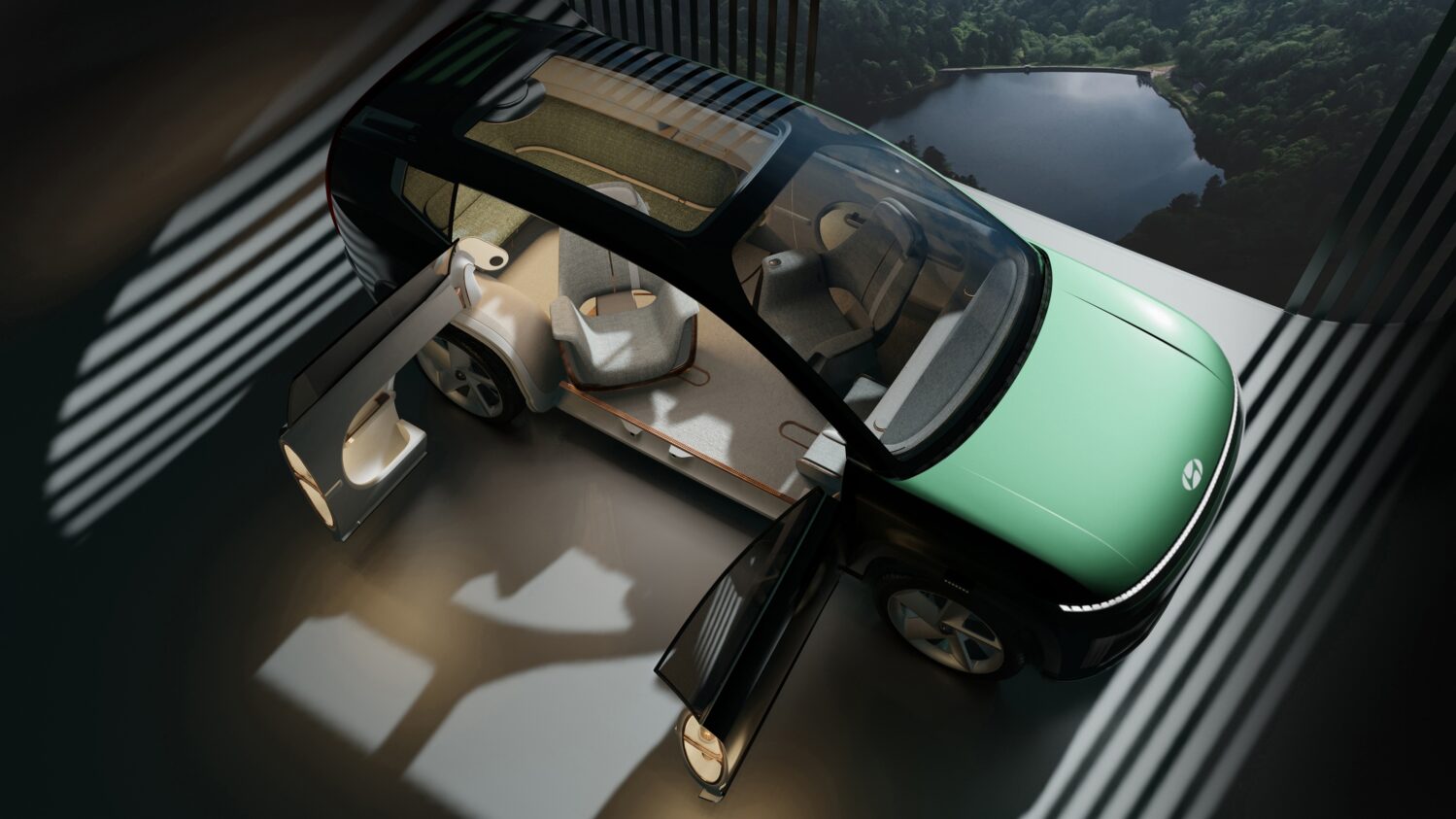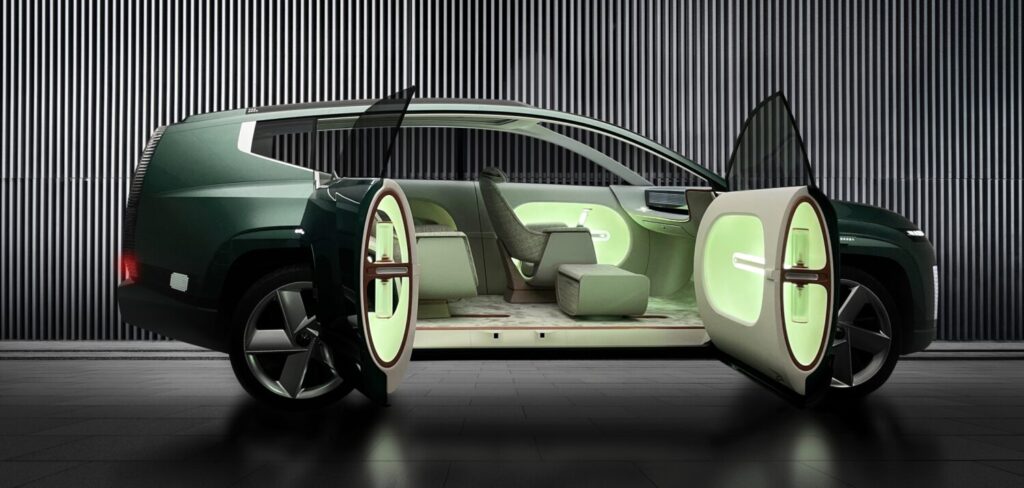Korean auto manufacturer Hyundai’s recently unveiled Seven concept vehicle maximizes interior space thanks to its 3.2m wheelbase, which pushes the wheels out to the furthest corners of the chassis. Meanwhile, the flat floor allows for an alternative to the traditional row-based seat arrangements, added to which, the pillarless coach doors offer a grand entrance.
As the concept is envisaged to be autonomous, the driver’s seat features a retractable control stick that hides away when not in use. Without the need for the usual driver’s equipment, the cockpit and integrated screens create a lounge-like experience. The seat arrangement is unlike traditional SUVs, with swiveling lounge chairs and a curved bench seat. The seat arrangement can also be customized depending on driver-controlled or autonomous driving modes.
The concept features what is termed a universal island console, specially designed home appliances and a multi-functional smart hub graphic user interface. When the smart hub and front seats combine with the rear chaise-lounge seating, the interior becomes a communal space. A built-in mini fridge even provides chilled refreshment on the go and shoe-care compartments refresh passengers’ footwear.
The concept’s vision roof features a panoramic screen that not only displays various content based on passengers’ tastes, but also changes the overall interior atmosphere to guarantee maximum relaxation and pleasure during the journey.
“Seven dares to break from the beaten path,” said SangYup Lee, SVP and head of Hyundai Global Design. “It paves the way forward for what an SUV needs to become in the EV era with a unique aerodynamic pure form that does not compromise on its rugged personality. The interior opens up a new dimension of space that cares for its passenger as a family living space.”
 The concept also incorporates a variety of features intended to improve both sustainability and occupant safety and health. Beyond the use of recycled materials throughout the interior, such as mineral plaster, bamboo wood and carpet, the bio resin and interior paint are also based on renewable sources. The use of copper and hygienically treated fabric with antibacterial functions also ensure all surfaces inside the car remain clean at all times.
The concept also incorporates a variety of features intended to improve both sustainability and occupant safety and health. Beyond the use of recycled materials throughout the interior, such as mineral plaster, bamboo wood and carpet, the bio resin and interior paint are also based on renewable sources. The use of copper and hygienically treated fabric with antibacterial functions also ensure all surfaces inside the car remain clean at all times.
Furthermore, what Hyundai has dubbed the Hygiene Airflow System takes inspiration from the sophisticated airflow management of passenger aircrafts. In its vertical mode, air is taken in through built-in air intakes in the roof rails from which the air travels from above to below, and is extracted through the exterior vent behind the rear wheels. In its horizontal mode, the air flows from the slim dashboard to the rear vents. Most importantly, this system can activate independently whether the vehicle is in motion or not to reduce cross-contamination among passengers and isolate the airflow between front and rear occupants.
A UVC sterilization process also activates once the vehicle is vacated of its passengers. The control stick, first-row storage drawer and speakers pop up. Then, integrated sanitizing UVC lights help clean the living space of bacteria and viruses. In addition, there are sanitizing storage compartments in the bench and a smart hub console for personal belongings.



